| Listing 1 - 10 of 20 | << page >> |
Sort by
|
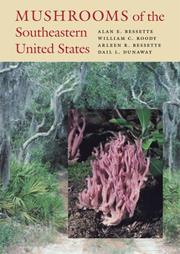
ISBN: 081563112X 9780815631125 Year: 2007 Publisher: Syracuse (N.Y.) : Syracuse university press,
Abstract | Keywords | Export | Availability | Bookmark
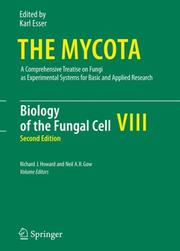
ISBN: 9783540706151 9783540706182 Year: 2007 Publisher: Berlin : Springer-Verlag,
Abstract | Keywords | Export | Availability | Bookmark
 Loading...
Loading...Choose an application
- Reference Manager
- EndNote
- RefWorks (Direct export to RefWorks)
Mycology, the study of fungi, originated as a subdiscipline of botany and was a descr- tive discipline, largely neglected as an experimental science until the early years of this century. A seminal paper by Blakeslee in 1904 provided evidence for sel?ncompatib- ity, termed heterothallism , and stimulated interest in studies related to the control of sexual reproduction in fungi by mating-type speci?cities. Soon to follow was the demonstration that sexually reproducing fungi exhibit Mendelian inheritance and that it was possible to conduct formal genetic analysis with fungi. The names Burgeff, Kniep and Lindegren are all associated with this early period of fungal genetics research. These studies and the discovery of penicillin by Fleming, who shared a Nobel Prize in 1945, provided further impetus for experimental research with fungi. Thus began a period of interest in mutation induction and analysis of mutants for biochemical traits. Such fundamental research, conducted largely with Neurospora crassa,led to theone gene: one enzyme hypothesis and to a second Nobel Prize for fungal research awarded to Beadle and Tatum in 1958. Fundamental research in biochemical genetics was extended to other fungi, especially to Saccharomyces cerevisiae, and by the mid-1960s fungal systems were much favored for studies in eukaryotic molecular biology and were soon able to compete with bacterial systems in the molecular arena.
Fungi --- Mycology --- Cell biology --- Treatises
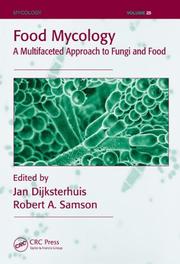
ISBN: 9780849398186 0849398185 9780429189012 9781466523296 Year: 2007 Publisher: Boca Raton CRC Press
Abstract | Keywords | Export | Availability | Bookmark
 Loading...
Loading...Choose an application
- Reference Manager
- EndNote
- RefWorks (Direct export to RefWorks)
Fungi --- mycotoxins --- edible fungi --- food plants --- mycology
Periodical
Abstract | Keywords | Export | Availability | Bookmark
 Loading...
Loading...Choose an application
- Reference Manager
- EndNote
- RefWorks (Direct export to RefWorks)
The Open Mycology Journal was an Open Access online journal, that published research articles, reviews, and letters in all areas of experimental and applied mycology.
Mycology --- Fungi --- Botany --- Microbiology --- Mycologie --- Champignons --- Microbiologie
Book
ISSN: 16294637 ISBN: 9782294077128 2294077121 Year: 2007 Publisher: Issy-les-Moulineaux: Elsevier,
Abstract | Keywords | Export | Availability | Bookmark
 Loading...
Loading...Choose an application
- Reference Manager
- EndNote
- RefWorks (Direct export to RefWorks)
Parasitic diseases --- Mycoses --- Maladies parasitaires --- Internship and Residency --- Parasitology --- Mycology --- Parasitic Diseases --- Parasitology - textbooks --- Mycology - textbooks
Book
ISBN: 9789050112772 Year: 2007 Publisher: Zeist : KNNV Uitgeverij,
Abstract | Keywords | Export | Availability | Bookmark
 Loading...
Loading...Choose an application
- Reference Manager
- EndNote
- RefWorks (Direct export to RefWorks)
Nature protection --- Plant ecology. Plant sociology --- Eumycetes --- 582.28 --- Mycorrhiza --- 570.3 --- mycorrhiza (lt) --- schimmels (lt) --- Eumycetes. True fungi. Moulds. Mycology --- 582.28 Eumycetes. True fungi. Moulds. Mycology
Periodical
ISSN: 18780253 17494613 Year: 2007 Publisher: [Amsterdam] : [Kew, Surrey] : Elsevier ; British Mycological Society,
Abstract | Keywords | Export | Availability | Bookmark
 Loading...
Loading...Choose an application
- Reference Manager
- EndNote
- RefWorks (Direct export to RefWorks)
Mycology --- Fungi --- Mycologie --- Champignons --- Fungi. --- Mycology. --- British Mycological Society --- British Mycological Society. --- Fungal kingdom --- Fungus kingdom --- Funguses --- Mycobiota --- Mycota --- BMS --- Botany --- Microbiology --- Cryptogams
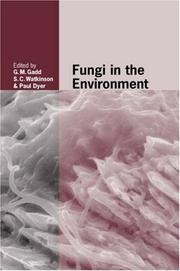
ISBN: 0521850290 9780511275234 0511275234 051127453X 9780511274534 1280815892 9781280815898 1107165024 9786610815890 0511272952 0511321309 0511541791 0511273746 Year: 2007 Publisher: Cambridge : Cambridge University Press,
Abstract | Keywords | Export | Availability | Bookmark
 Loading...
Loading...Choose an application
- Reference Manager
- EndNote
- RefWorks (Direct export to RefWorks)
Fungi are of fundamental importance in the terrestrial environment. They have roles as decomposers, plant pathogens, symbionts, and in elemental cycles. Fungi are often dominant, and in soil can comprise the largest pool of biomass (including other microorganisms and invertebrates). They also play a role in maintenance of soil structure due to their filamentous growth habit and exopolymer production. Despite their important roles in the biosphere, fungi are frequently neglected within broader environmental and microbiological spheres. Additionally, mycological interests can be somewhat fragmented between traditional subject boundaries. This multi-disciplinary volume explores the roles and importance of fungi in the environment. Particular emphasis is given to major research advances made in recent years as a result of molecular and genomic approaches, and in cell imaging and biology. Drawing together microbiologists, mycologists, and environmental scientists, this work is a unique account of modern environmental mycology, and a pivotal contribution to the field.
Fungi. --- Mycology. --- Botany --- Fungi --- Microbiology --- Fungal kingdom --- Fungus kingdom --- Funguses --- Mycobiota --- Mycota --- Cryptogams --- Mycology --- Environment --- Fungal biology --- Fungology --- Fungus biology --- Ecology
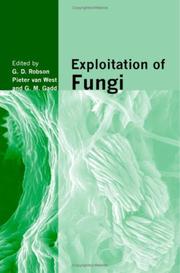
ISBN: 9780511902451 9780521859356 9780511901683 0511901682 051190245X 0521859352 0511849044 9780511849046 1107167329 9781107167322 1282817930 9781282817937 9786612817939 6612817933 0511900899 9780511900891 0511798539 9780511798535 0511797133 9780511797132 051179990X Year: 2007 Publisher: Cambridge : Cambridge University Press for the British Mycological Society,
Abstract | Keywords | Export | Availability | Bookmark
 Loading...
Loading...Choose an application
- Reference Manager
- EndNote
- RefWorks (Direct export to RefWorks)
The fungi are a highly diverse kingdom of eukaryotic microbes. Recent advances in molecular genetics, together with the release of whole genome sequences of an increasing number of fungi, are facilitating their exploitation and commercialisation. Fungi have the ability to secrete large quantities of proteins of commercial value, and their complex secondary metabolic pathways produce a diverse range of bioactive compounds which have had a major impact in the pharmaceuticals market. In addition, the fungi themselves are increasingly being developed as alternatives to conventional chemically-based pest control strategies, and as bioremediation agents capable of transforming pollutants in the soil environment. With chapters written by international experts, this volume highlights current and future biological, biochemical, and molecular exploitation of the fungi in biotechnology. It will have broad appeal, not only to mycologists and microbiologists, but also to biomedical scientists, biotechnologists, environmental and molecular scientists, plant pathologists and geneticists.
Fungi --- Fungal kingdom --- Fungus kingdom --- Funguses --- Mycobiota --- Mycota --- Cryptogams --- Mycology --- Economic aspects --- Industrial applications
Book
Year: 2007 Publisher: s.l.
Abstract | Keywords | Export | Availability | Bookmark
 Loading...
Loading...Choose an application
- Reference Manager
- EndNote
- RefWorks (Direct export to RefWorks)
This report presents the results of a workshop in mycology held in Togo (West Africa) in July 2007. It was organised by the National Botanical Garden of Belgium and the Department of Botany (Faculty of Sciences, University of Lomé, Togo). Most of this project was financed by the Belgian focal point for the Global Taxonomy Initiative. this workshop was set up as an individual and institutional capacity reinforcement training in taxonomy and curation of mycological collections. It was attended by five scientists, 3 from Togo (Lomé) and 2 from Niger (Niamey). the theoretical part was hel at the Department of Botany (Faculty of Sciences, University of Lomé, Togo). The practical part included an 17-day mycological expedition in the forests and reserves from the districts du Plateau, du centre and Maritime of Togo. This report presents an exhaustive list of all the herbarium material collected during this foray (314 specimens) as well as perspectives for future research. The herbarium was deposited at the Department of Botany of the University, the duplicates are kept at the National Botanic Garden of Belgium (BR)
BR Staff Publications [c] (book chapter or book) --- FUN Fungi & Lichenes --- CD-ROM --- mycology --- Africa --- Togo --- symposium proceedings --- biodiversity --- herbarium collections
| Listing 1 - 10 of 20 | << page >> |
Sort by
|

 Search
Search Feedback
Feedback About UniCat
About UniCat  Help
Help News
News